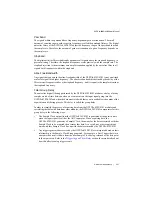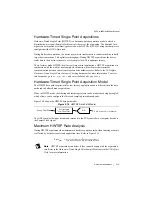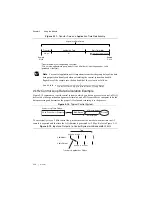
© National Instruments
|
2-1
2
Using the Module
This chapter describes how to connect voltage, thermocouple, and current input signals to the
NI PXIe-4302/4303. It also provides the I/O connector signal pin assignments of the modules.
Driver support for the NI PXIe-4302/4303 was first available in NI-DAQmx 15.1. For the list of
devices supported by a specific release, refer to the
NI-DAQmx Readme
, available on the
version-specific download page or installation media.
Connecting Signals
This section provides information regarding connecting voltage, thermocouple, and current
signals.
Caution
To ensure the specified EMC performance, operate this product only with
shielded, twisted pair cables, and shielded accessories.
Caution
To ensure the specified EMC performance, the length of all I/O cables
must be no longer than 30 m (100 ft.).
Connecting Voltage Signals
Note
The TB-4302 terminal block is required when measuring voltage signals.
Connecting Floating Signal Sources
A floating signal source is not connected to the building ground system, but has an isolated
ground-reference point through the ground of the device. Some examples of floating signal
sources are outputs of transformers, thermocouples, battery-powered devices, optical isolators,
and isolation amplifiers. An instrument or device that has an isolated output is a floating signal
source.
It is important to connect the negative lead of a floating source to AIGND (either directly or
through a bias resistor). Otherwise, the source may float out of the maximum working voltage
range and return erroneous data. The easiest way to reference the source to AIGND is to connect
the positive side of the signal to AI+ and the negative side of the signal to both AIGND and AI-
without using resistors, as shown in Figure 2-1. This connection works well for DC-coupled
sources with source impedances of less than 100
Ω
.























